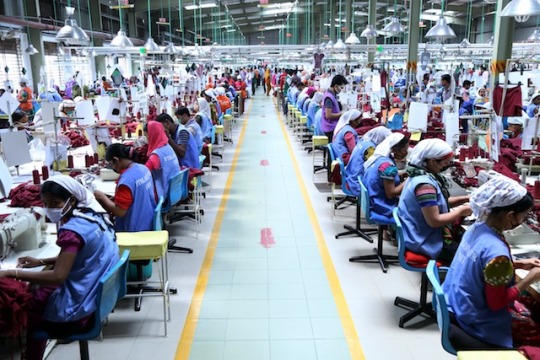#fastfashion socialchange clothing garmentindustry
Text
News

Pollution
Based on the article “Fashion Brands Create Programs to Recycle, Repurpose Clothing” by Seattle Times, they argue that shopping for clothes has become a weekly habit which can later on end up in landfills. The demand for this fashion-trend has increased the amount of resources needed such as water and energy. The chemical within the fabric can potentially pollute rivers due to the fabric dye from the clothing material. What many people don’t realize is the type of solutions out there to prevent or reduce the negative impact that fast fashion has had on our environment. Some examples that would be considered as solutions were recycling textiles so they can be used for other purposes such as turning the material into hangers, pillows, and jackets. What is done with the textile waste is that it is gathered and turned into other goods such as wiping cloths and carpet padding. Overall, the best solution for these fast fashion company and the consumers is to create clothing that is more durable and a ban on dumping clothes in landfill.
Exploitation or Empowerment?
When you work as a garment worker in the supply chain of the fashion industry, your task is clear. It is to produce or harvest raw materials, or spin yarn, or even perform different phases of constructing a garment together. As a garment worker, you will endure working for poverty wages, in dreadful conditions, and undertake working long hours. Achieve this and your company will be happy and you will become more financially independent. But is all of this worthwhile? Not worthwhile, according to Victoria Stafford, writing in a recent article Factory Exploitation and the Fast Fashion Machine. Stafford argues that, because of the hierarchical power structure in supply factories, often the result is gender-based violence and abuse. The problem stems from the fact that women make up the majority of garment workers in fast fashion factories and the management workforce of these factories are in the hands of a male-majority workforce.
Yet, some argue that this exploitation can also lead to female empowerment. According to a recent article Exploitation or Emancipation by Emilie Schultze, Liberal writers such as Leslie T. Chang and social economist Naila Kabeer hope to influence the debate. Kabeer emphasizes how, “work in the garment industry has allowed women in Bangladesh to gain recognition for their economic contribution for the family, and that garment workers tend to be more conscious about their rights and have a more critical mindset than other women”. To date most discussion has centred on exploitation and mistreatment of garment workers, but understanding how this industry has integrated women into paid work has had a empowering effect on women from developing countries.
Link to articles about Pollution:
https://www.seattletimes.com/business/fashion-brands-create-programs-to-recycle-repurpose-clothing/
https://www.bbc.com/news/science-environment-45745242
Citations:
Engel, A., & Engel, M. (2018, September 08). Fashion brands create programs to recycle, repurpose clothing. Retrieved February 5, 2019, from https://www.seattletimes.com/business/fashion-brands-create-programs-to-recycle-repurpose-clothing/ Harrabin, R. (2018, October 05). Fast fashion is harming the planet, MPs say. Retrieved February 5, 2019, from https://www.bbc.com/news/science-environment-45745242
Link to articles about Exploitation/Empowerment:
https://www.fashionrevolution.org/exploitation-or-emancipation-women-workers-in-the-garment-industry/
https://www.greenamerica.org/blog/factory-exploitation-and-fast-fashion-machine (Paris)
Citations:
(n.d.). Retrieved from https://www.fashionrevolution.org/exploitation-or-emancipation-women-workers-in-the-garment-industry/
(n.d.). Retrieved from https://www.greenamerica.org/blog/factory-exploitation-and-fast-fashion-machine
3 notes
·
View notes